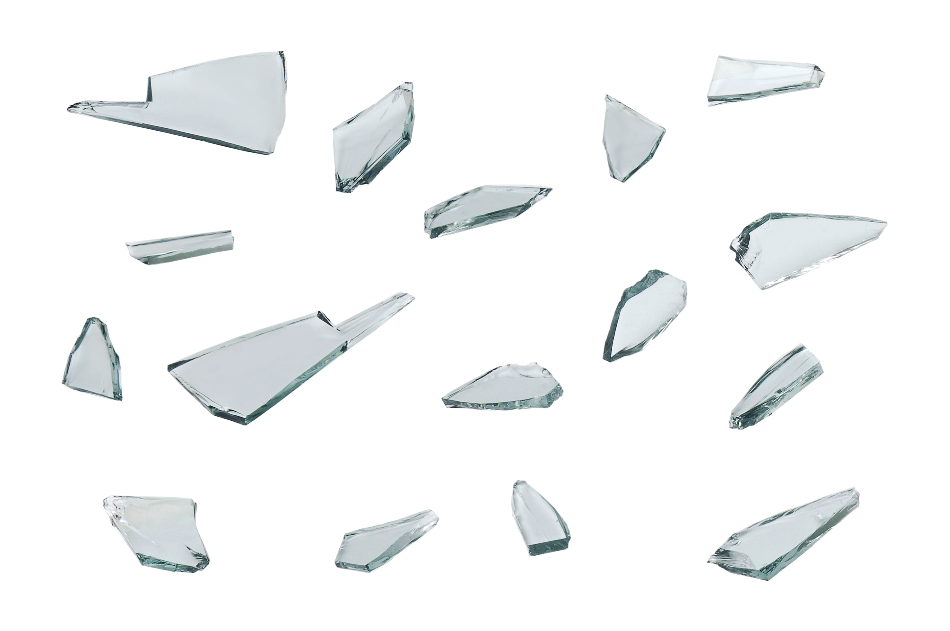Article updated on 25 November 2020

Runrun2 / Shutterstock
Glass can be defined as an amorphous solid. An amorphous solid is considered to have a random arrangement of atoms, similar to that of molecular arrangements observed in a gas.
Glass plays an essential role in science and industry; it is a part of our everyday lives. The optical properties of glass determine how it interacts with light. Familiarity with a few fundamental optical properties helps engineers decide if the glass is the ideal material for the application at hand. In this article, we will review some of the optical properties of glass.
Key Optical Properties of Glass
Refractive Index of Glass
The refractive index is probably the most common optical property. It is defined as the ratio of the speed of light in a vacuum to that of light in a particular material. Light’s speed is reduced when it travels through a medium due to the interaction of photons with electrons. Higher electron densities result in lower velocities. This is why light travels rapidly in glass, faster in water, and is at its fastest in a vacuum. In other words, glass has a higher electron density than water or vacuum.
The refractive index of glass is a very crucial concept because it determines not only how much light is reflected and transmitted, but also its angle of refraction in glass. The refractive index determines the differences between the angle of incidence and the transmission of light with a higher index implying greater differences.
Most glasses have a refractive index of 1.5 which means that reflection losses at the surface result in approximately a 4% decrease in light intensity.
Absorption
The next important property of glass is absorption and this is what is a key determinant of color in objects. Physical specifications of color are associated with objects or materials based on their physical properties such as light absorption, reflection, or emission spectra. Color in glass is a result of selective absorption and the scattering of specific visible wavelengths.
When light travels through a glass, the intensity of the light is reduced as part of it is absorbed. This absorption happens when the energy of a photon of light matches the energy needed to excite an electron within the glass to its higher energy state.
When this happens, and the photon is absorbed by the glass, this leads to a reduction in intensity. The absorbance of glass depends on the wavelength of the incident light.
Reflection
Reflection is an optical property that is seen when light flows from air to glass and a part of the incident light is reflected back from the glass surface. When light flows from air to glass, maximum light is transmitted into the glass except at large incident angles. The reason why reflections off glass appear to be quite dim is due to the fact that glass only reflects a tiny proportion of the incident illumination.
Even though reflectance increases rapidly at high incident angles, this effect is largely counteracted by the fact that the magnitude of illumination decreases as a cosine function of the incident angle.
Transmittance
Transmittance occurs when light is incident from air to glass and a part of the light gets transmitted through it. Optical glasses have excellent transmittance from the near UV and IR regions. Typically, glasses with low refractive index show high transmittance far down to short wavelengths in the UV region. In the case of glasses with a high refractive index, the absorption edge already reaches the visible region.
Electromagnetic radiation also plays a role in the transmittance of glass, which is of course also influenced by the type of glass and the wavelength of radiation.
Solarization
The influence of visible and UV radiation (less than 380 nm wavelength) on glass is called solarization. The solarization behavior of optical glass can be studied by irradiation with a xenon or mercury lamp, or with UV lasers. The transmittance of optical glass is inversely proportional to its spectral absorption.
The nature of UV transmittance is greatly influenced by heavier elements present in the glass composition (e.g. lead, barium, niobium, titanium, lanthanum), melting technology, and residual impurities. However, the infrared transmittance is mainly influenced by the OH content in the melt.
Disclaimer: The views expressed here are those of the author expressed in their private capacity and do not necessarily represent the views of AZoM.com Limited T/A AZoNetwork the owner and operator of this website. This disclaimer forms part of the Terms and conditions of use of this website.